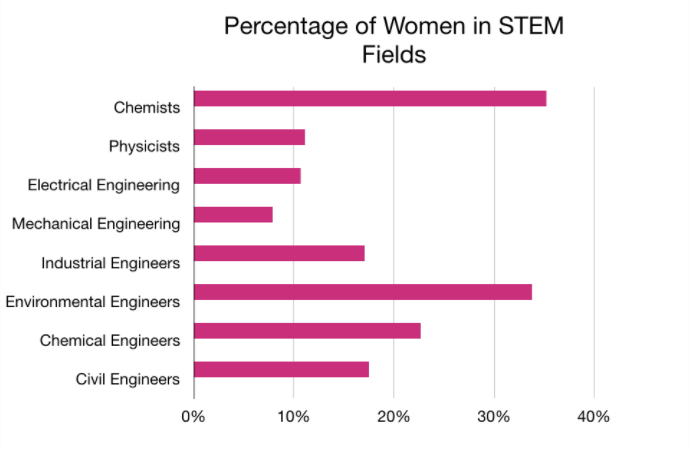Wanted: Women in STEM
The Gender Gap in STEM Fields
The cry for more women in STEM fields remains nothing new in our current culture. Increasing opportunities arise for females to enter science, math, engineering, and technology fields, and the gender wage gap even stands significantly lower in these STEM fields as an added incentive, according to the Office of the Chief Economist. Despite the call for gender equality in STEM, women still make up only 25% of all STEM workers.
In order to counter this issue, Nancy Morcos, sophomore, launched a Women in STEM campaign at Westminster through the Cyborg Cats robotics team to promote science, technology, engineering, and math among girls in the school and greater community.
“I really felt that a lot of the girls around me were interested in some form of STEM but unsure about going into a challenging, hard, and predominantly male career field,” said Morcos.
Despite the effort of many motivated people such as Morcos, the greater push for women in STEM fields seems to have only a minimal effect on the male-dominated workforce.
While a wealthy country filled with opportunities such as the United States might be expected to lead the way in incorporating women in STEM, research shows otherwise. A recent study conducted at the University of Missouri charted countries’ gender equality versus the percentage of women in STEM-related jobs. The researchers discovered that countries with the least opportunities for females have the highest amount of women in STEM fields while countries with more gender equality such as America struggle with smaller percentages of females in these fields.
In countries where women face little opportunity to develop economic independence, such as Algeria and the United Arab Emirates, STEM careers elevate them into a coveted position of self-reliance, causing more women to pursue STEM careers than in areas like America where women experience a multitude of career choices that can support themselves and their families.
When women receive more options for future careers, they are less likely to end up in a STEM job. This does not result from women possessing less skill than their male counterparts. Girls and boys score at an equal level on math and science standardized tests, according to the National Girls Collaborative Project. The shift happens when women enter college. Only 6.7% of women hold STEM undergraduate degrees, 30% of all total STEM degrees, according to a study conducted by Microsoft.
American girls score as high as boys on standardized tests, but the majority still end up in non-STEM related jobs. Whether other careers seem more engaging or STEM has never been offered as a valid option, they choose to pursue other fields when faced with picking a major in college.
“Every girl has the strength to get through life to a STEM career, and we want to help them see that,” said Sydney Moore, sophomore, who contributes to the robotics Women in STEM campaign.
Through introducing girls to professionals and educating them about STEM careers, Morcos and Moore continue to push towards creating a culture where both girls and boys find equality in STEM.




